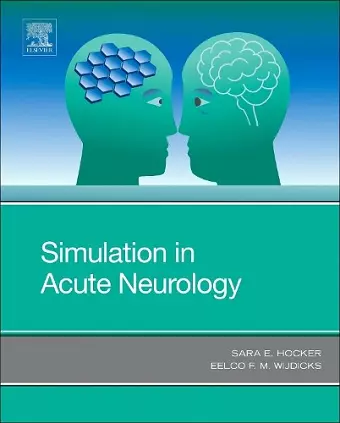Simulation in Acute Neurology
Eelco F M Wijdicks author Sara E Hocker author
Format:Hardback
Publisher:Elsevier - Health Sciences Division
Published:7th Nov '18
Currently unavailable, and unfortunately no date known when it will be back

Simulation in Acute Neurology is a textbook on the execution of a simulation-based educational program in the management of acute neurologic emergencies. Simulation in Acute Neurology has practical value because it contains detailed descriptions of our simulation scenarios. The foundation of this book is our experience with neurosimulation?and it has been a very good one. Part I provides an overview of the principles of simulation in medicine and examines the many unique opportunities simulation provides as an educational tool. Barriers to simulating neurologic emergencies are also discussed. Simulation allows a physician-in-training to be observed directly as he or she evaluates and manages acute neurologic disease. Part II is the core of the book. Fifteen acute neurologic emergencies, including complex neuroethical quandaries, are presented in detail, step by step, decision by decision, error after error. Each chapter in this section starts with an explanation of the essence of the discussed neuroemergency (THE PROBLEM BEFORE US), followed by a description of the scenario itself (THE PRESENTING CLINICAL PROBLEM), how scenarios can be adjusted to different types of learners (ADAPTING THE SCENARIO), and ends with a discussion of topics for feedback, which are generally focused around errors and pitfalls (DEBRIEFING). To show the flow of scenarios, we created two additional main headings: (THE IDEAL LEARNER) and (THE NOT-SO IDEAL LEARNER). Part I provides an overview of the principles of simulation in medicine and examines the many unique opportunities simulation provides as an educational tool. Barriers to simulating neurologic emergencies are also discussed. Simulation allows a physician-in-training to be observed directly as he or she evaluates and manages acute neurologic disease. Part II is the core of the book. Fifteen acute neurologic emergencies, including complex neuroethical quandaries, are presented in detail, step by step, decision by decision, error after error. Each chapter in this section starts with an explanation of the essence of the discussed neuroemergency (THE PROBLEM BEFORE US), followed by a description of the scenario itself (THE PRESENTING CLINICAL PROBLEM), how scenarios can be adjusted to different types of learners (ADAPTING THE SCENARIO), and ends with a discussion of topics for feedback, which are generally focused around errors and pitfalls (DEBRIEFING). To show the flow of scenarios, we created two additional main headings: (THE IDEAL LEARNER) and (THE NOT-SO IDEAL LEARNER).
"This is a great read for academic medicine neurologists who have an interest in using simulated scenarios for teaching acute neurological care." -Eduardo De Sousa, MD, FAAN (Mercy NeuroScience Institute) Doody's Score: 98-5 Stars!
ISBN: 9780323551342
Dimensions: unknown
Weight: 500g
150 pages